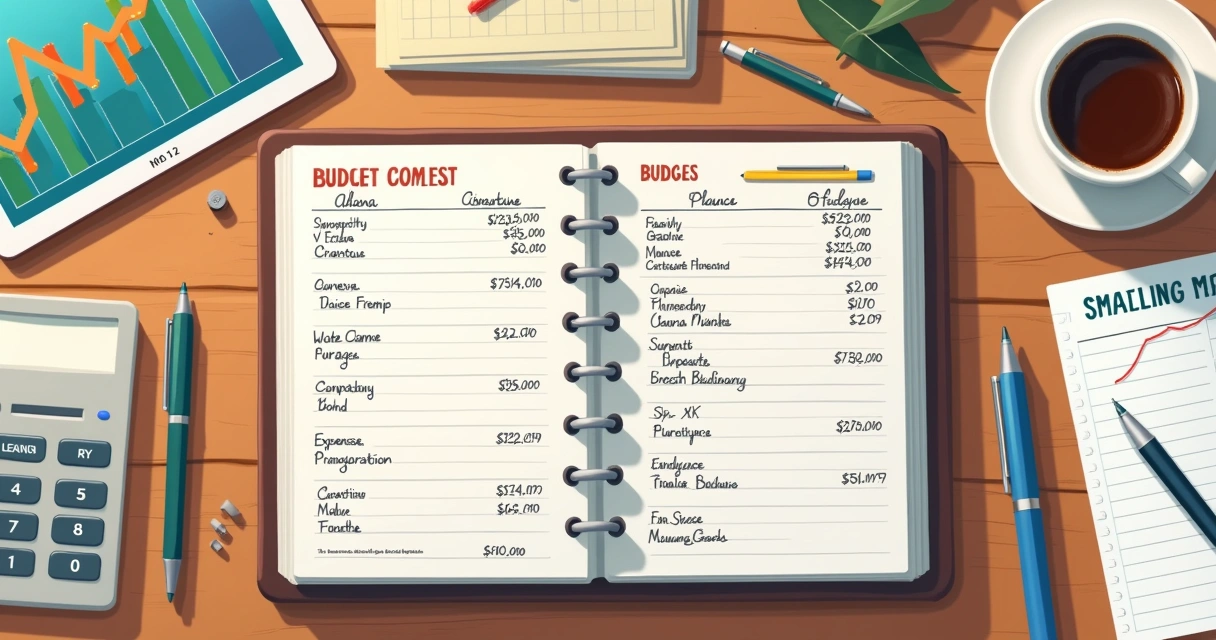How to Effectively Budget, Shop, and Invest: Your Complete Guide
Learn practical steps to manage budgets, create shopping lists, assess investments, and weigh buying vs renting homes.

Introduction: Building Smart Financial Habits
Managing money isn't just about numbers—it's about habits, small choices, and the story your bank account tells. If you've ever checked your balance and wondered, "Where did it all go?" you're not alone.
These personal money puzzles aren't solved in a single step. Instead, it's about building mindful routines—budgeting, thoughtful shopping, and eventually, taking the leap into investments.
Understanding Account Limits and Building Mindful Budgets
Limits might sound negative, but they're really just a frame for reality. Every checking account, credit card, and virtual wallet has a ceiling—and, honestly, so do our incomes.
A well-planned budget is, in one sense, just a map. But unlike road maps, the path changes every month. There are expenses you can anticipate and small surprises you just can't.
Flexibility Versus Discipline
Some financial experts encourage flexibility rather than rigidity. If you're too strict, one unexpected birthday party or vet visit derails everything. Instead, keep your budget adaptable.
I remember switching from a spreadsheet to an app after missing yet another coffee purchase. It wasn't about sophistication—just awareness. Apps show you where pennies slip away, especially on priorities that really matter.
Practical tips:
- Track every cent: Even the smallest expenses count
- Set non-negotiables: rent, transportation, groceries
- Prepare for variables: medical bills, gifts, car repair
- Coordinate with others: if you split finances, work together
Account Limits Aren't Just Numbers
A bank account limit draws a line, but knowing your personal limit is deeper. It's about finding where comfort ends and anxiety starts.
Maybe you recall dipping into overdraft after an innocent "extra" night out. It's humbling. Your monthly budget isn't just about numbers—it's about reflection, too.
How to Make an Effective Shopping List (and Save Money)
Grocery shopping can be comforting—or stressful. Over the years, creating a good list has made the process much smoother—and saved more than a little cash.
Step One: Plan Before You Shop
Wandering aisles is a recipe for impulse buys.
Starting before you leave home makes all the difference. Open the fridge and cupboards. Note what's nearly out. Then, check for staples: rice, pasta, oil.
Smart strategies:
- Avoid shopping hungry: hungry shoppers buy more snacks
- Stick to what you planned: if something you use a lot is on sale, feel free
- Consider private label brands: they're usually cheaper and often just as good
- Buy in bulk if it makes sense: for items you use often
Step Two: Review and Adjust
After shopping, take a minute to look at the receipt. Was it more than expected? Less? Did you end up with extras you didn't plan for? Record it somewhere.
Starter Investment Options—And What to Watch For
If money left over at the end of the month feels rare, the thought of investing can seem out of reach. But small steps count. Even $20 invested regularly matters.
Common Options for First Investments
High-yield savings accounts: Not glamorous, but a safe spot for an emergency fund. The interest is higher than a standard account.
Retirement accounts: Money grows, often tax-free, over a long period. Some employers match contributions, which is basically free money.
Index funds and ETFs: Instead of picking individual stocks, you buy a slice of the overall market. It's less risky and fits almost any starting amount.
Government bonds: These are loans to the government, with less risk and predictable returns. As mentioned in guides about intelligent investing.
Smaller Investment Steps
If $1,000 feels like too much, even $10 is possible with many platforms. The trick? Consistency matters far more than amounts at first.
Important points:
- Know the fees: some apps look free but subtract fees that eat away at returns
- Ask: can you access your money fast?
- Beware trends: investing in what's popular isn't safe just because others are doing it
Renting Versus Buying: What Makes Sense?
No one forgets their first apartment after college or the dream of one day owning a home. It's easy to think owning is always better—and sometimes it is, but not for everyone.
When Renting Fits Better
Rent buys time and freedom.
- You're moving cities often
- You don't have a solid down payment
- Emergency savings aren't enough to cover surprises
- You expect big life changes
The Upsides and Downsides of Home Buying
Buying a home can mean stability, the joy of decorating as you wish, and slowly building equity. Yet there are real drawbacks:
Upfront costs: The down payment is often tens of thousands. Then there are closing costs, insurance, and the moving truck.
Repairs and taxes: Home ownership means responsibility. New appliance needed? Paint peeling? The bill is yours.
Less flexibility: Need to relocate quickly? Selling a house can take months.
A Quick Comparison
- Renting: Lower upfront cost, flexible, fewer surprise expenses
- Buying: Bigger upfront investment, potential to build equity, stable payments, home customization
Choosing one over the other isn't only about math. It's also about how settled you feel, your appetite for risk, and your readiness for responsibility.
Conclusion: Building Habits, Not Just Numbers
Money habits are shaped—one choice at a time. Budgets may seem dull, but they're really just the story of your life, planned in advance.
Thoughtful shopping puts you back in control of your monthly story. Understanding investments opens doors, if only a little at a time. And whether you're renting, buying, or just figuring it all out, awareness is your strongest ally.
Perhaps most of all? Don't go it alone. Share your financial goals, ask questions, and celebrate small wins—tracking every step, learning as you go.